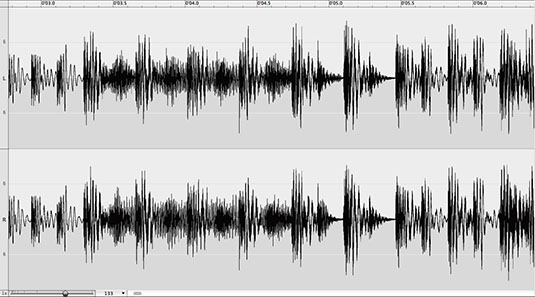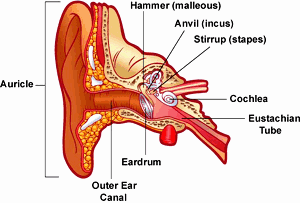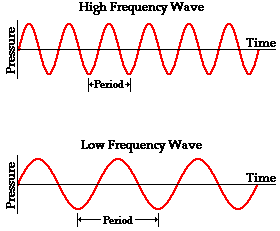What is sound?
Vibrations that travel through air and causes air particles to move. The air particles pass the vibration to other air particles and on to other particles. This movement is called sound waves. It keeps going until it runs out of energy. When the vibration gets to the ear, our eardrums vibrate and pass it through the other parts of our ear and then nerves send the message to our brain. That's how we hear.

Parts of the ear

Outer ear canal - They act like a funnel to catch sound waves and direct them to the eardrum.
*A canal is a pathway for water, but the ear canal is a pathway for sound.
Eardrum - collects the sound waves and pass it on to the hammer, anvil and stirrup. Then the hammer, anvil and stirrup pass on the vibration to the very much smaller oval shaped window of the cochlea.
Cochlea - has fluid in it which moves because of the vibration and bends hairs on the outside of cells lining the cochlea. Some of the hair cells create a signal which is sent along the auditory nerve to the brain.
Then the brain works out what you are hearing.
Amplitude
(Volume)
Amplitude is how loud something is. A low amplitude produces a quiet sound. A high amplitude produces loud noises.

Frequency
(Pitch)
How quickly sounds vibrate. High frequency waves make high-pitched sounds. Low frequency waves make low-pitched sounds.

Music
Chosen instrument: cymbal
Hitting cymbals cause air molecules. When we hit a cymbal the vibration pushes nearby air molecules back and forth, making the nearby air pressure rise and fall. As the cymbal pushes into the air, air molecules are packed tighter creating a compression. .jpg)
"Sound" facts :)
- Usually, all sounds travel through air at 344 meters per second.
- When it's warmer, the sound can travel faster. Colder air makes sound slower.
- Sound can travel at 1,524 meters per second underwater.
- Sound can travel approximately 5,486 meters per second through steel.
- Soft surfaces like grass or pillows will absorb sound waves.
- Had materials can reflect sound so that the sound travels back in the opposite direction. This is called an echo.
- Sound moves through air 344 meters per second.
- Dogs can hear sound at a higher frequency than humans, allowing them to hear noises we can't hear.
- Sound is used by many animals to detect danger, warning them of possible attacks before they happen.
- Sound travels 3 times faster through water than in air.
